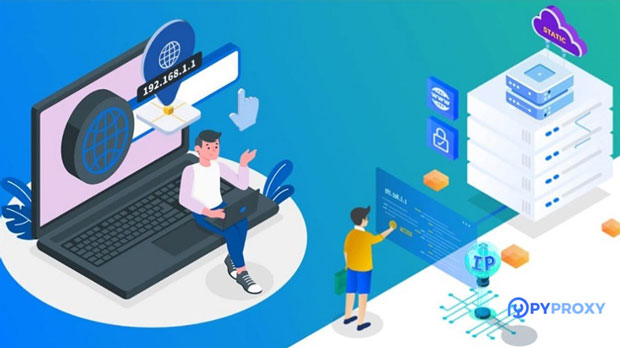When it comes to web scraping or crawling using HTTPS, the selection of proxies plays a vital role in ensuring secure, efficient, and uninterrupted data collection. In the digital age, data extraction from websites is often done using tools like PYPROXY and 911 Proxy. Both of these services provide proxies for secure browsing, but each offers distinct features that make one more suitable than the other based on specific use cases. In this article, we will compare Pyproxy and 911 Proxy in terms of security, reliability, features, and overall performance to determine which one is the more reliable option for HTTPS crawling. 1. Introduction to Web Scraping and Proxy ServersWeb scraping involves extracting data from websites, typically by automating the process through scripts or bots. However, the process of scraping has its challenges, especially with HTTPS security protocols, which are designed to ensure encrypted communication between clients and servers. To bypass restrictions and avoid being blocked by websites, users often rely on proxies. These proxies can anonymize requests and allow for a seamless scraping experience while masking the user's IP address.The importance of using a reliable proxy server cannot be understated. Poor proxy choices can lead to data leakage, exposure to malicious websites, or even account bans. This makes it crucial to choose proxies that are secure, fast, and reliable. Pyproxy and 911 Proxy are two popular services offering such proxies, each with different levels of security and reliability.2. Pyproxy: An Overview of Features and PerformancePyproxy is a proxy service designed to allow users to securely connect to websites while maintaining anonymity. It is particularly popular for automated tasks such as web scraping, data extraction, and crawling.Security Features:One of the standout features of Pyproxy is its use of advanced encryption protocols that ensure secure connections. Pyproxy ensures that all data transferred between the client and the server is encrypted, making it a great option for users looking for a high level of security in their scraping operations. It supports HTTPS traffic, which is essential for accessing secure websites.Reliability and Speed:In terms of reliability, Pyproxy offers a robust infrastructure with various proxy types, including residential, data center, and mobile proxies. These proxies allow users to choose the best option based on their scraping needs. residential proxies, in particular, are known for their reliability as they come from real user IP addresses, making them less likely to be flagged or blocked by websites.Ease of Use:Pyproxy is known for its user-friendly interface and integration with popular scraping tools and frameworks like Python and Selenium. It provides detailed documentation and support to help users configure their proxies effectively.Limitations:While Pyproxy offers many benefits, there are some drawbacks. For example, residential proxies may come at a higher price point compared to other options. Additionally, Pyproxy may have limited proxy locations depending on the user's subscription plan.3. 911 Proxy: An Overview of Features and Performance911 Proxy, another leading provider in the proxy market, focuses on providing anonymous and secure proxies for various use cases, including web scraping.Security Features:911 Proxy also offers HTTPS support, ensuring encrypted communication between the client and the server. However, its encryption is slightly more basic compared to Pyproxy, as it relies on fewer layers of protection. Despite this, 911 Proxy still provides secure connections and can be used effectively for web scraping tasks that require anonymity.Reliability and Speed:911 Proxy has an extensive network of proxies, including both residential and data center proxies. The network is optimized for high-speed crawling and scraping, making it an excellent choice for users who need proxies that can handle large volumes of data. However, due to the wide availability of proxies, some users may experience occasional slowdowns or connectivity issues, especially if they are using the proxies for large-scale operations.Ease of Use:911 Proxy has a relatively straightforward setup process, and it is compatible with a wide range of scraping tools and software. However, it may not offer the same level of detailed documentation and support as Pyproxy, making it slightly more challenging for beginners.Limitations:911 Proxy’s pricing structure is also a consideration. While it offers competitive rates for basic proxy plans, users seeking premium services or additional features may find the pricing to be slightly on the higher side. Furthermore, the availability of proxy locations may vary depending on the plan chosen.4. Security Considerations in HTTPS CrawlingWhen it comes to HTTPS crawling, the security of the proxy server is paramount. Both Pyproxy and 911 Proxy offer HTTPS support, but their security protocols differ in terms of robustness and encryption layers. Pyproxy stands out with its advanced encryption methods, which offer a higher level of protection compared to 911 Proxy. It is also important to consider factors like IP rotation and anonymity. Both proxy services offer IP rotation, which ensures that a new IP address is used for each request, reducing the chances of detection and blocking by websites. However, Pyproxy’s residential proxies are particularly effective in this regard, as they come from real user IPs, making them less likely to be detected as proxies by advanced anti-scraping technologies.5. Reliability: Which Proxy Is More Reliable for HTTPS Crawling?When comparing the reliability of Pyproxy and 911 Proxy, Pyproxy emerges as the more dependable option for HTTPS crawling. The main reason for this is Pyproxy’s superior infrastructure and its use of residential proxies, which provide a more reliable connection than data center proxies. Residential proxies are less likely to be blacklisted or flagged by websites, ensuring that your crawling operations remain uninterrupted.On the other hand, 911 Proxy is still a strong contender, especially when it comes to affordability and scalability. Its extensive proxy network allows users to select from a variety of proxy types, but users may experience occasional slowdowns, especially when using data center proxies.6. Performance and Speed: Which Proxy Performs Better?In terms of performance, both Pyproxy and 911 Proxy offer fast proxy speeds. However, Pyproxy tends to outperform 911 Proxy in high-demand scraping tasks, thanks to its reliable residential proxies. 911 Proxy, while offering decent speed, may encounter bottlenecks during heavy traffic or large-scale crawling operations.Ultimately, Pyproxy’s emphasis on security, reliability, and speed makes it the ideal choice for HTTPS crawling, especially when consistent and uninterrupted scraping is essential.7. Pricing: A Key Factor in Choosing the Right ProxyPricing is an important factor for users deciding between Pyproxy and 911 Proxy. Pyproxy’s premium residential proxies come at a higher price, but they offer better reliability and security. For users on a tighter budget, 911 Proxy offers more affordable plans with reasonable speeds and performance. However, for users who prioritize high-quality, secure crawling, Pyproxy may be worth the investment.8. Conclusion: Which Proxy Is More Reliable for HTTPS Crawling?In conclusion, both Pyproxy and 911 Proxy are reliable choices for HTTPS crawling, but Pyproxy is the superior option when it comes to security, reliability, and performance. Its advanced encryption, residential proxies, and strong infrastructure make it the ideal choice for users who require a high level of security and uninterrupted service for web scraping tasks. 911 Proxy, while still a good option, may be more suited for users on a budget who can tolerate occasional performance fluctuations.
Oct 11, 2025


































































